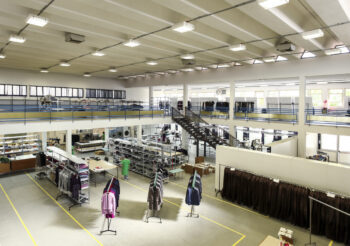In the last 18 months, Covid-19 has taught us that we don’t know what the future holds.
We have been exposed to severe supply shortages and great operational risks which have left some businesses unable to fulfill customer demand.
In manufacturing supply chains, the disruptions have caused some companies to shift their focus towards embracing agile solutions, in addition to or instead of, applying lean principles.
The growth of e-commerce has also highlighted the fast-changing nature of customer preferences, so companies need to maintain flexibility and adaptability in their responses.
How lean works
The lean supply chain suits manufacturers that produce items in large volumes and with low variability. It focuses on reliability and predictability in long-term supply chain planning rather than on flexibility and adaptability. The main goal is to reduce waste thereby containing costs and providing more value to the customer.

For instance, Nike, has 700+ factories in 42 countries. It applies lean principles to decrease the waste of materials, increase productivity, improve quality, and of course make profits.
The seven wastes of lean
According to Lean Six Sigma principles, there are seven areas of waste:
- Overproduction – Making too much too soon, capital tied up in finished products
- Inventory – Capital tied up in raw materials and parts, cost of moving stock around, space, facilities and utilities used
- Motion – Wasted movement of people and machines
- Defects – Waste of effort in replacements and repairs, administrative costs
- Over-processing – Unnecessary activities, adding more features than required
- Waiting – Delays due to slow or halted production, idle time
- Transport – Adds no value, involves human resources and equipment. Moving products unnecessarily.
The aim is to integrate each step of production into a holistic, efficient process that reduces cost and improves overall revenue.
How agile works
The agile supply chain focuses on flexibility and responsiveness. An agile supply chain acts on current demand rather than only historical forecasting. Agility and adaptability win in rapidly changing environments. Being agile is the ability to respond positively to market volatility. Strong partnerships with suppliers are vital to making an agile supply chain work. An agile supply chain also tends to have lower warehousing costs as inventory is less. However, in some industries, agile chains can create high levels of waste and which can drive prices up.

As we slowly recover from the disruptions of 2020-2021, we need to focus on adapting operations and building agility to fulfill customer demand. Three success factors have been identified within effective and agile supply chains: your supplier relationships, your people, and the effective use of the new technologies. Agility relies on real-time data and the technology that supports it.
Technology is a key enabler of agility
New software solutions provide a way of converting data into information and making it available and transparent to all users. These users are not only internal, but they are also external and include suppliers, contracted third parties and customers. Sharing of reliable, real-time information through multiple communication channels has been shown to deliver supply chain excellence thereby developing closer connections with customers. Digitization aims to achieve full end-to-end visibility that promotes faster decision-making.
The hybrid solution
Organizations have historically used either lean or agile models to cater to market fluctuations and supply chain challenges. They have been regarded as an either-or option. But every company is different. Processes in procurement, production, distribution, and logistics vary, and there is a demand for custom solutions that are a combination of the two approaches.
It is possible to design your supply chain to be agile and flexible enough to meet your needs while still cutting out aspects of the process that don’t add value. This approach is used in global FMCG companies in the food, household consumables and clothing sectors.

Apparel companies such as Benetton and Zara use lean supply chain strategies to predict how many garments to make in each style. They make the garments to meet the forecasted demand but are responsive to constant changes in customer preferences.
The lean strategy is designed to cut costs when producing many products with limited changeability. Agile can react to market changes more easily. The lean supply chain is more reliable and predictable, but agile is more adaptable and flexible. As supply chains grapple with unpredictable consumer behaviours they need to build agility in their operations to respond quickly while applying lean principles where relevant.














